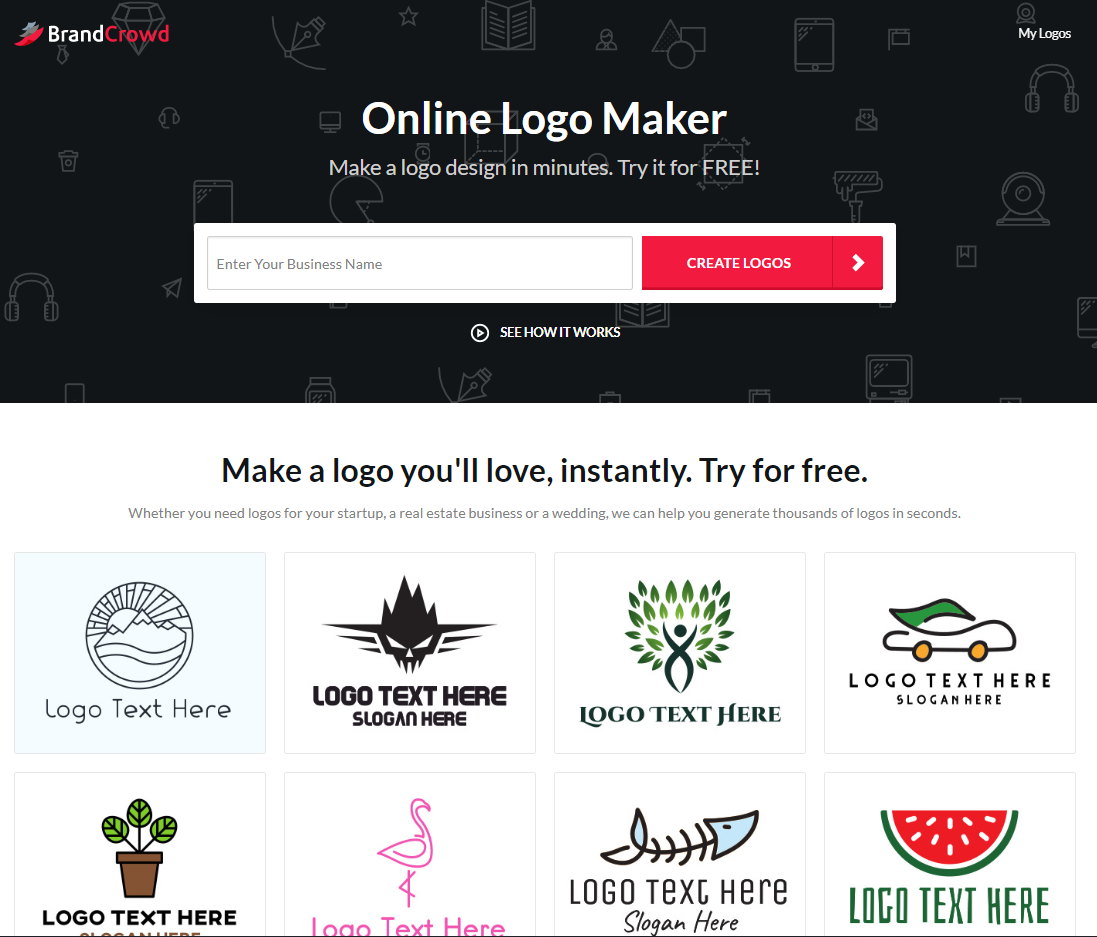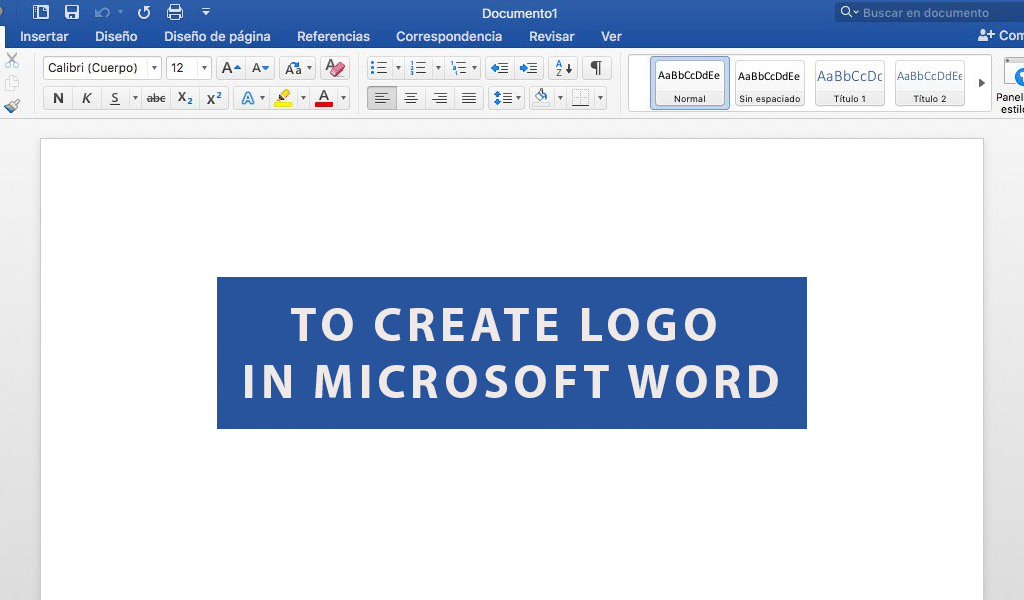

Create a logo free#
Feel free to use your Lasso Tool to Select > Right Click > Cut out your letters to fix any alignment issues.Ħ. This allows your letters to appear to be resting on the same plain.ĥ. Hint: Letters like C, S, O, capital Q and G rest slightly above and below your guides. You’ll want to place your guides on the base, descender, body, ascender and t line Pull down some guides for your sketch to ensure all your letters rest on the same axis. Go to Image > Adjustments > Levels and pull in your whites and blacks so you can really see your lettering Open up your scanned image of your sketch in Photoshopģ. Scan your image at 600 DPI-and please don’t just use your iPhoneĢ. This next part is going to go over some design techniques for digitizing your logo and requires an intermediate knowledge of Photoshop and Illustrator. Whether you want a rough or clean look for your logo will determine your digital process. Keep in mind when you’re building a logo from scratch, the more work you do in the drawing process, the less effort it’ll take to digitalize your work. Whether you feel more comfortable going to the computer at this point or perfecting your hand-lettered solution is up to you. Hint: Use a thin marker for the outline of your drawing first, and then color it in with a thicker marker to fill in. This will help you see the weight of your letters so you can make sure each of your letters are consistent. Once your outline is complete, you can ink your piece using thin and thick Sharpies or Micron pens. “Even the most talented hand lettering artists don’t get it on the first try.” Then, as you continue to experiment, make your drawings more and more refined by adding thickness and decorations. Hint: A good way to get started is to build the skeleton of your letters first by simply writing out the words. I usually rough out anywhere from 10 to 20 thumbnails for a complete look at all the possible design solutions. This is your opportunity to experiment and really go wild with as many concepts as you can imagine. Without looking at any of your references, start to develop various thumbnails so you can explore some ideas. Whether you’re a seasoned hand-letterer or a graphic designer who usually sticks to a digital canvas, I encourage you to start sketching your logo concepts with an old-fashioned pencil and paper. Breaks allow your brain to gather outside information so you can build a larger set of references that will be at your mental disposal when you start the sketching process. Now it’s time to take a 1-day breather to really get your ideas to steep. So no matter what style you’re thinking of, make sure it remains timeless and unique. Hint: be careful when pursuing popular trends because usually that design can become stale very quickly once that trend fades from popularity. I encourage you to develop a mood board of your own that consists of at least 20 images to help mold your style for the brand. By creating my Pinterest board for Letter Shoppe, you can tell that I’m gearing towards a vintage script style. Inspiration and visual researchĪt this point in my process, I like to create a mood board so I can visualize the style I have in my head.

Thanks to this exercise, I now know that this vintage serif style will be perfect for the supporting text in my logo design. In my mind, this is what I envision when I think of the word “bold” as it pertains to my brand. Then, as a fun exercise, I want you to draw out your favorite word and illustrate its meaning through typography, decorations, and illustrations.įor example, I drew “bold” in a tall serif font with a stroke sunburst coming towards you. These words can be feelings, adjectives, objects or time periods. To help figure the symbolism behind the brand, focus on your message by writing ten words that illustrate a business’s key benefits. Far beyond a simple, pretty picture, a strong logo is filled with symbolism, both obvious and hidden. Your logo is a visual representation of everything your company stands for. Sign painting is similar to Script, but the look needs to appear like it was made with a paint brush or brush pen for the desired hand-painted effect.įont psychology: Vintage, Craftsmanship, Artistic, Playful, and Affordable. Script lettering, which is similar to cursive or calligraphy, is often created with fluid strokes using a brush or nib.įont psychology: Classic, Romantic, Welcoming, Warm, and Soft.īlackletter script features elaborate thick-to-thin strokes and serifs and is seen with long swirls ascending from diagonal serifs.įont psychology: Masculet, Hard, Historic, Dramatic, and Cold.

Use Sketch or Photoshop? Craft is a suite of free plugins to help you design better and faster.


 0 kommentar(er)
0 kommentar(er)
